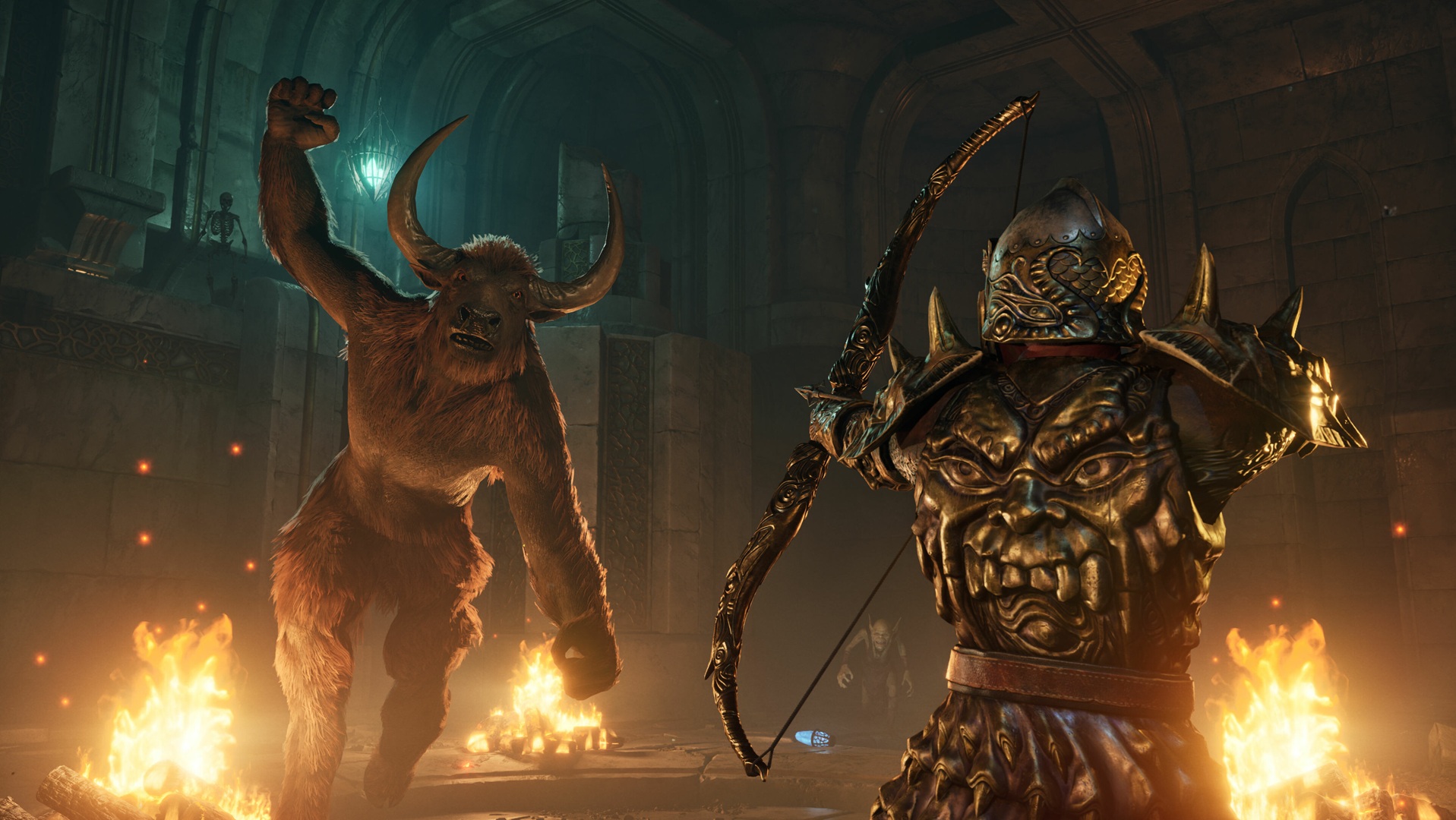Preview: Hands-on with Quantum Break's time-bending first act (Xbox One)
Quantum Break is drawing closer, and we've been lucky enough to go hands-on with some of the game's earliest stages.
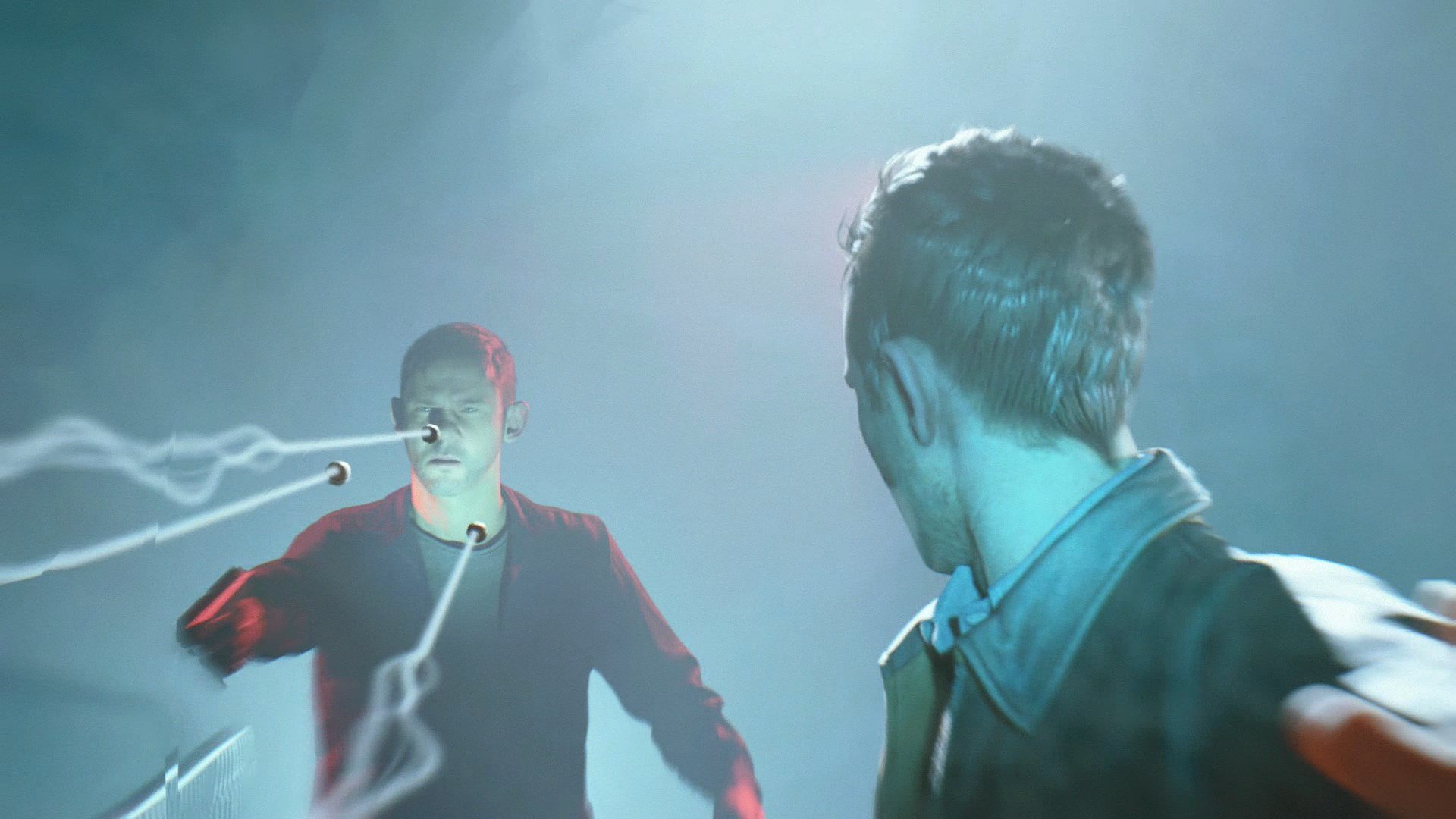
For those who are tuning into the game for the first time, Quantum Break is an upcoming third-person shooter from Remedy Entertainment, famed for Max Payne and Alan Wake. Quantum Break is a superhero story that takes place in the fictional city of Riverport, following a time manipulation experiment that went horribly wrong. Both Jack Joyce (portrayed by Shawn Ashmore) and Paul Serene (Aidan Gillen) gain the power to manipulate time itself as a result of the incident, as the walls of reality begin crashing down.
For our preview, we're looking at two stages from the game's first act, in addition to the first live action portion. I will say, though, even at this early stage, Quantum Break shows Remedy Entertainment at their best.
Riverport Unravelling
Setting
As mentioned, Quantum Break takes place in the fictional American city of Riverport. Jack Joyce has come to meet his brother, renowned physicist William Joyce at the site of Riverport University, although it isn't Will that comes to greet him. Without giving away too much, an altercation between the game's much-advertised antagonist, Paul Serene, and the Joyce brothers leads to a potentially universe-ending disaster. Time itself starts to break down, and the race to survive the quantum cataclysm begins.
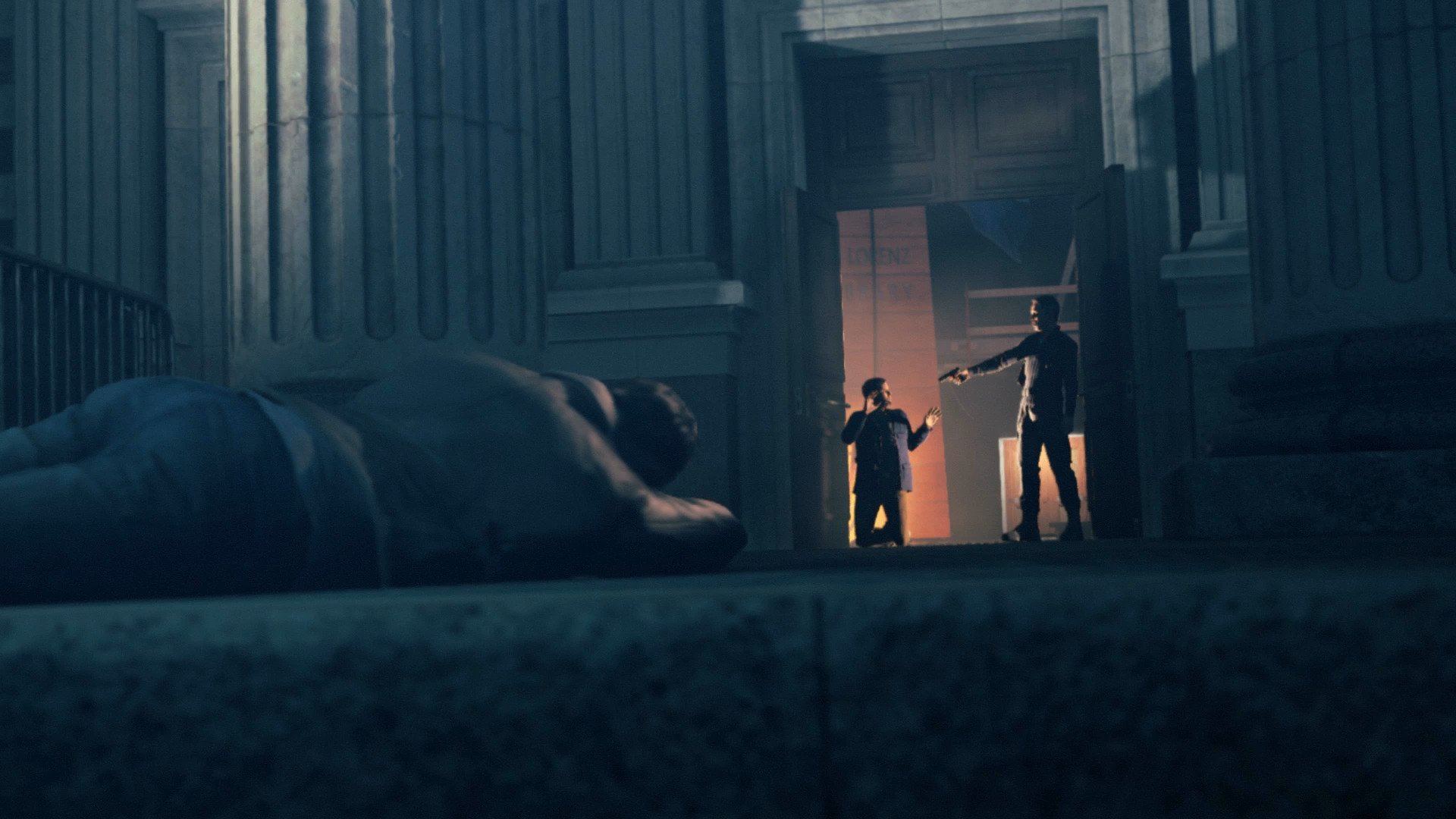
Paul Serene's Monarch Solutions has a plan to exploit the coming storm, and the amoral corporation is hell bent on preventing Jack Joyce, now endowed with the power to manipulate time, from ruining their plans.
I haven't experienced much of the plot so far, but right from the beginning, you'll realize that the story has far more to it than the marketing campaign has let on — this is Remedy Entertainment, after all. Sam Lake's masterful narrative elevated both Max Payne and Alan Wake far above their typical shooter station, and it certainly seems as though he's bought the same magic into Quantum Break. I have a feeling that the game's time-warping plot will have fans pouring the same impassioned scrutiny seen for similar time-abusing media like the movies Looper, Interstellar and Primer, maybe for years to come.
Quantum Break takes a sledgehammer to the barrier between video games and Hollywood.
Plot points aside, I firmly believe Quantum Break represents a quantum leap for digital storytelling. We've all seen the trailers, but witnessing familiar actors like Shawn Ashmore and Aidan Gillen rendered so precisely, so accurately, running live on a regular Xbox One is nothing short of incredible. Those tiny facial cues we take for granted in real life have a profound effect on communication, and their appearance in-game helps you connect with the characters in a far more powerful way than in a lesser title. Aidan Gillen's portrayal of Paul Serene has stolen the show for me so far, perhaps in part because he's received the most air time. Without spoiling, the range of characteristics Gillen portrays in a relatively short period has been impressive, time travel is a complicated business.
Get the Windows Central Newsletter
All the latest news, reviews, and guides for Windows and Xbox diehards.
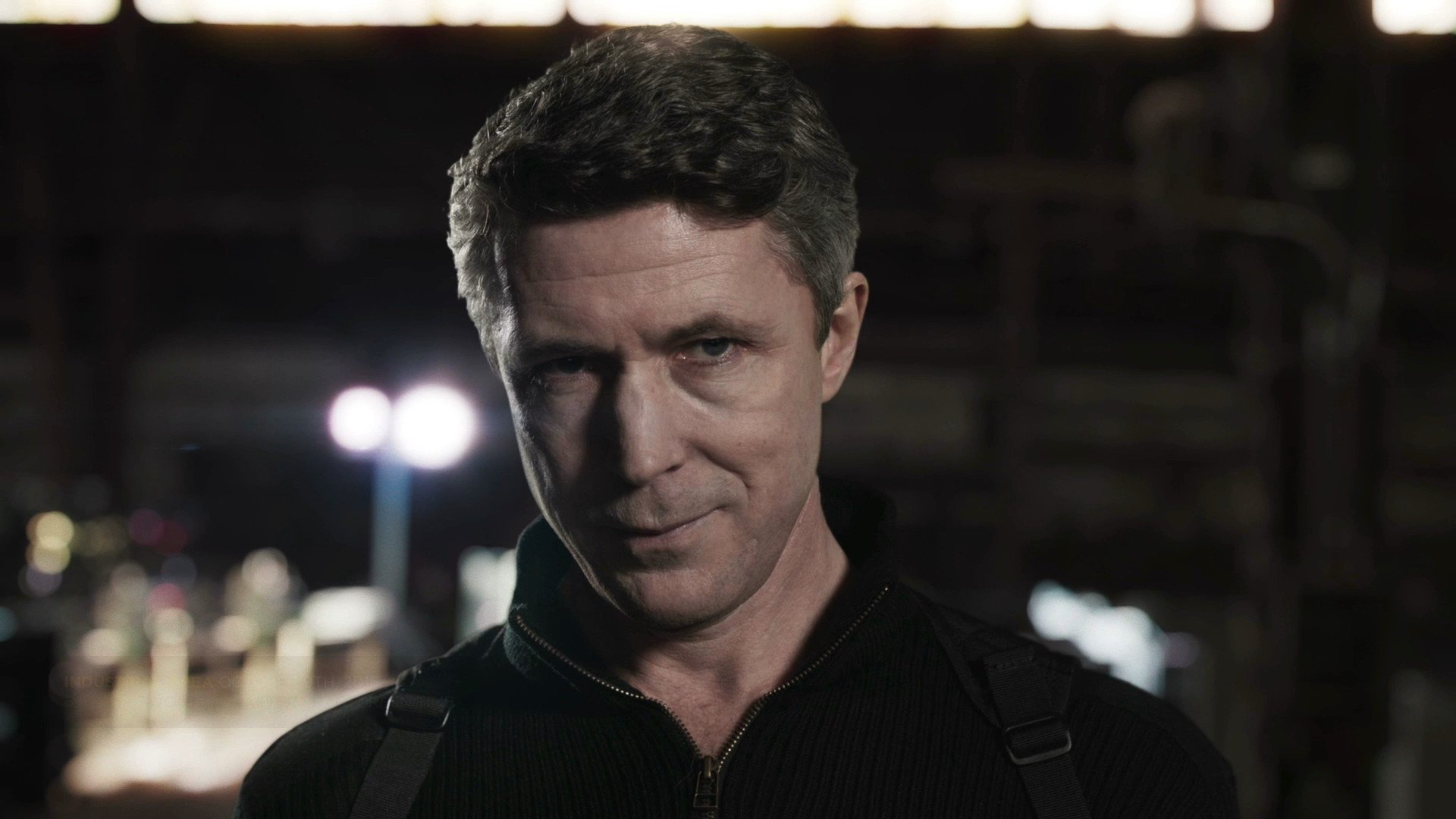
Indeed, Remedy Entertainment uses a shot of the digitally-rendered Gillen to transition into the game's first live action episode, unashamed to compare the fidelity of his digital portrayal side by side with HD live action, and to quote Paul Serene, the results are staggering. Quantum Break takes a sledgehammer to the barrier between video games and Hollywood. I need to spend more time to discover whether that shattered wall will having a liberating effect, or just injure its pacing.
Quantum Visuals
Graphics
I've touched on Quantum Break's character visuals, but what of its general design? I've seen Quantum Break live presentations a few times over the last couple of years, and always came away impressed. But time marches on, and between the first time I saw Quantum Break and now, we've had games like The Division, The Witcher 3, Rise of the Tomb Raider and Halo 5 — graphical powerhouses in various ways. I'd argue that Remedy Entertainment pushed the capabilities of the Xbox 360 with Alan Wake, and Quantum Break represents yet another technical marvel.
While the levels I've played so far do not represent Quantum Break's final code (as a hefty title update will ship sometime before launch), what Remedy have offered so far has been astonishing.
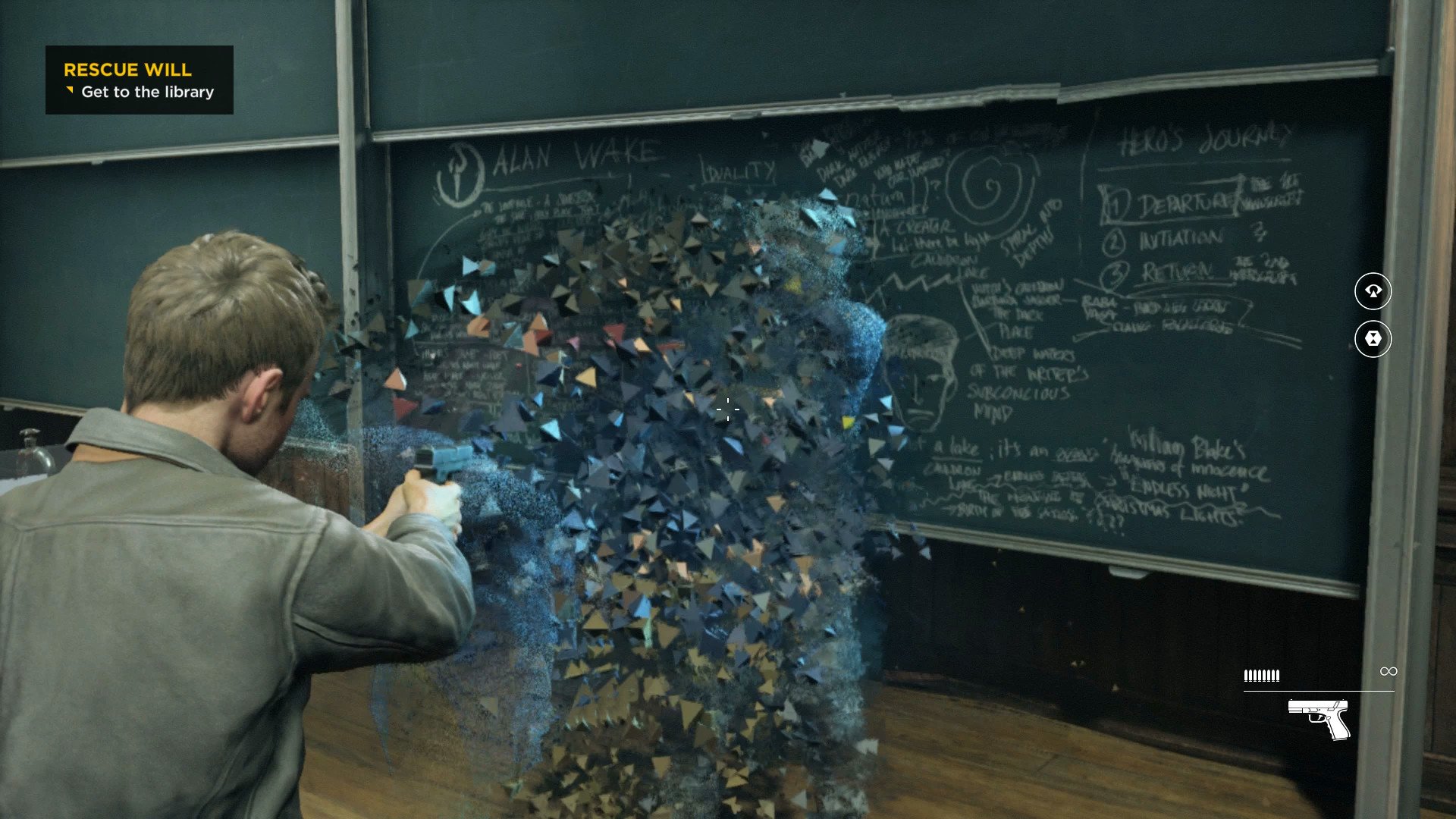
I've made the point in an earlier preview that Quantum Break's time-bending super-powers have directly impacted every aspect of the game's visual design. Every bullet from every gun, every fragment from the Quantum Breaks's highly destructible environments, every mundane object that gives the world believability — they're physical entities that can be manipulated (often heavily) by the game's physics-based combat abilities. Surveying destroyed objects, mid-air tracer rounds and contorted enemies suspended in fields of broken time gives you an idea of just how much load Quantum Break is placing on the Xbox One's hardware. At times, it feels like you're cavorting through a grand, pre-rendered movie straight from of big-budget Hollywood visual effects studio.
If the sheer amount of objects — both large and tiny — rendered in real time doesn't impress you, then the vivid effects Jack Joyce's time powers have on the environment just might. Every ability you use sends out a tide of liquid ripples across every surface of the game, disturbing, and sometimes smashing destructible objects, representing the violent manipulation of the laws of physics.
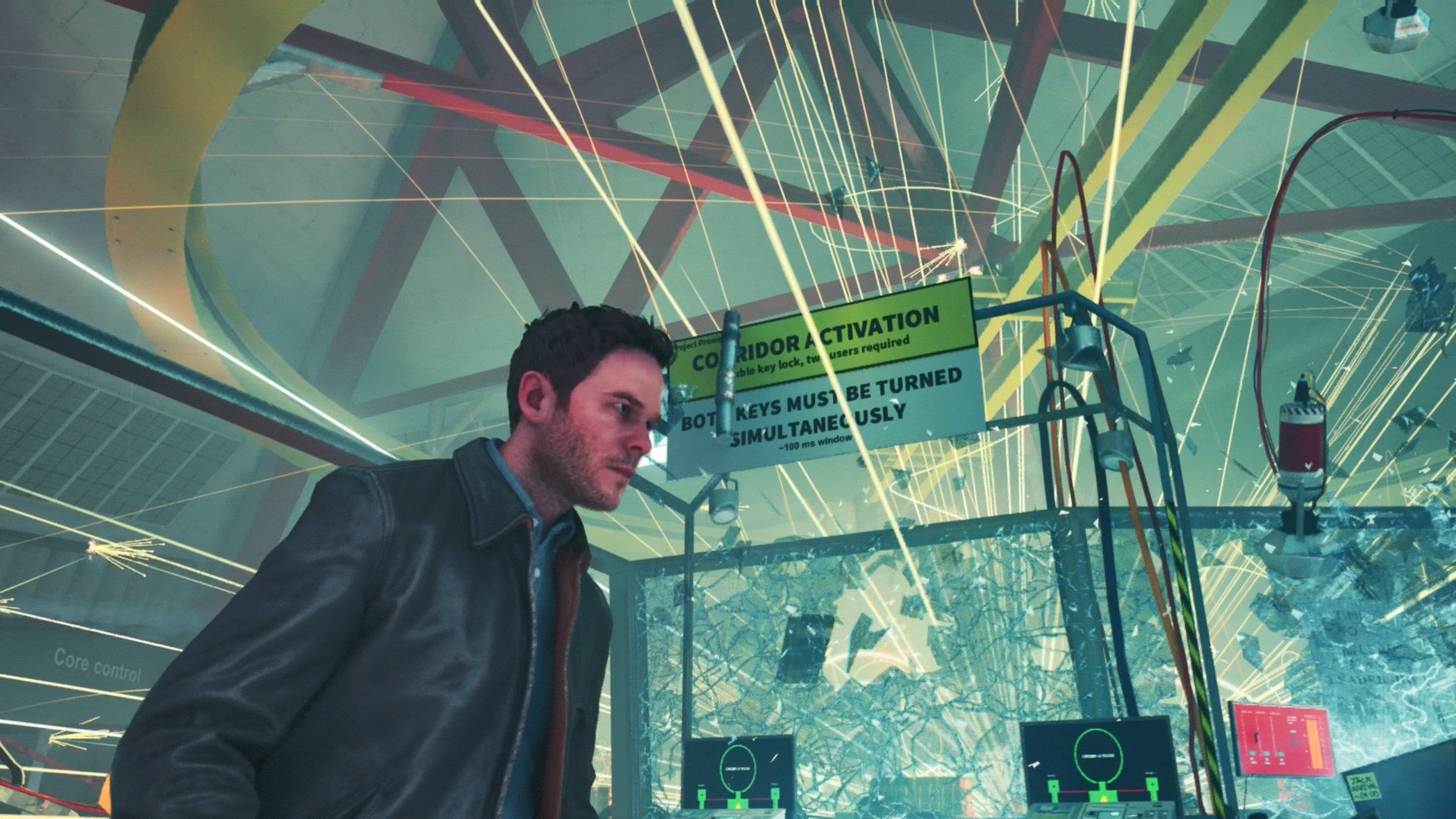
Between impressive anti-aliasing, moody lighting, liberal use of film grain and cutting-edge motion capture work, Quantum Break is a cinematic treat that should enthrall Remedy fans and graphic hounds alike. A question mark hangs over the game's final resolution, and at times, texture popping can be quite rough, but as mentioned, this isn't final code. I'll report back any improvements after the title update drops, which should be some before the game's April 4th launch.
Third-person Time Lord
Gameplay Impressions
Jack Joyce has the power to manipulate time, and even in Quantum Break's early stages it commands familiar superhero tropes (including those classic Remedy-style references). The combination of third-person shooting and active-use abilities resembles Mass Effect's biotic class, which utilized similar physics-bending capabilities on varying cooldown timers.
I'll admit, after coming in directly from The Division, I was initially disappointed with Quantum Break's shooting mechanics. I found myself longing for something that felt heavier — firing an assault rifle full-auto should have some kick, but it's not the case in Quantum Break. However, I began to feel like it could be by design rather than neglect as I proceeded through to Act 1 Part 3, as Joyce's certifiably insane time manipulation abilities began taking center stage.
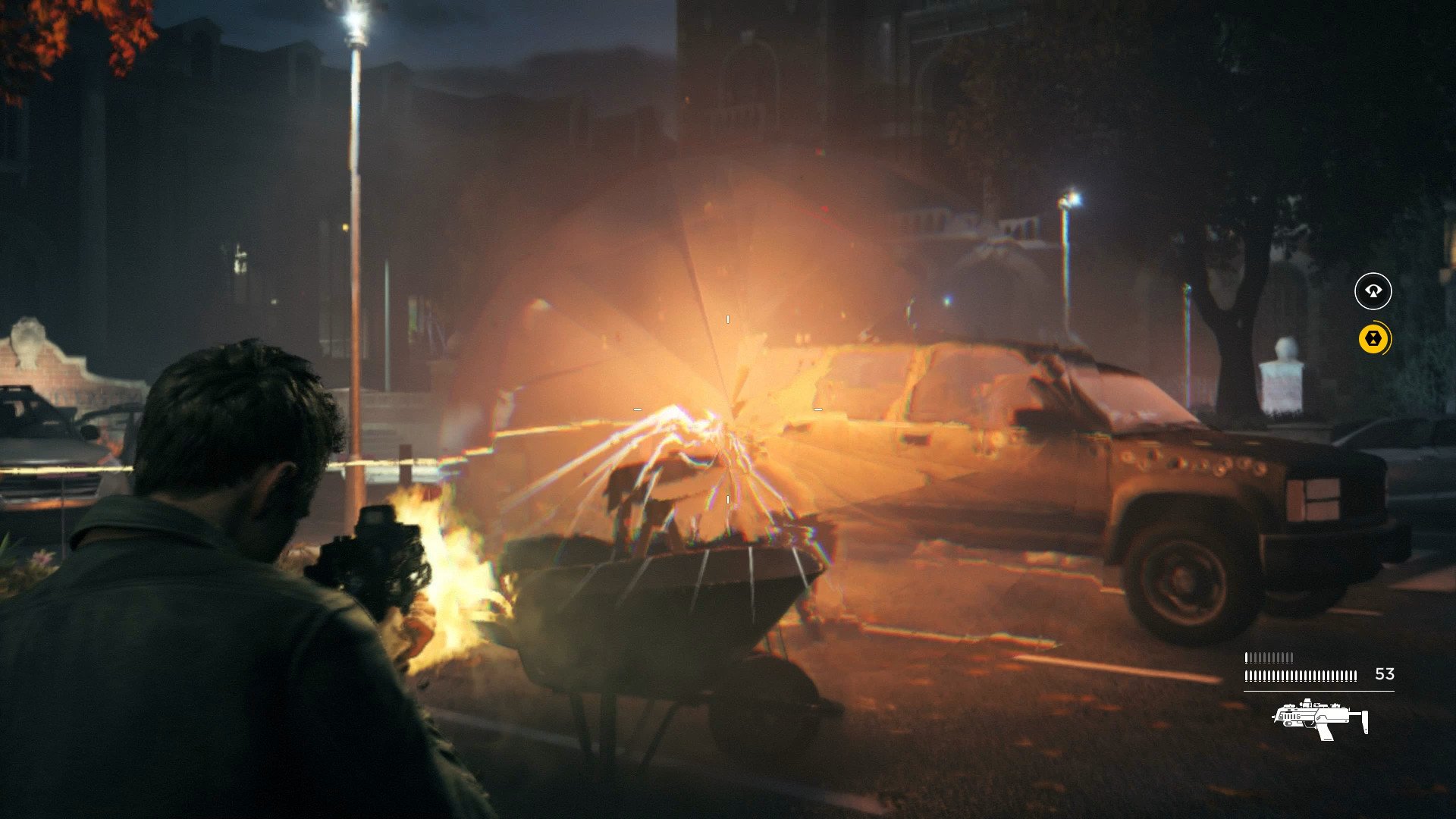
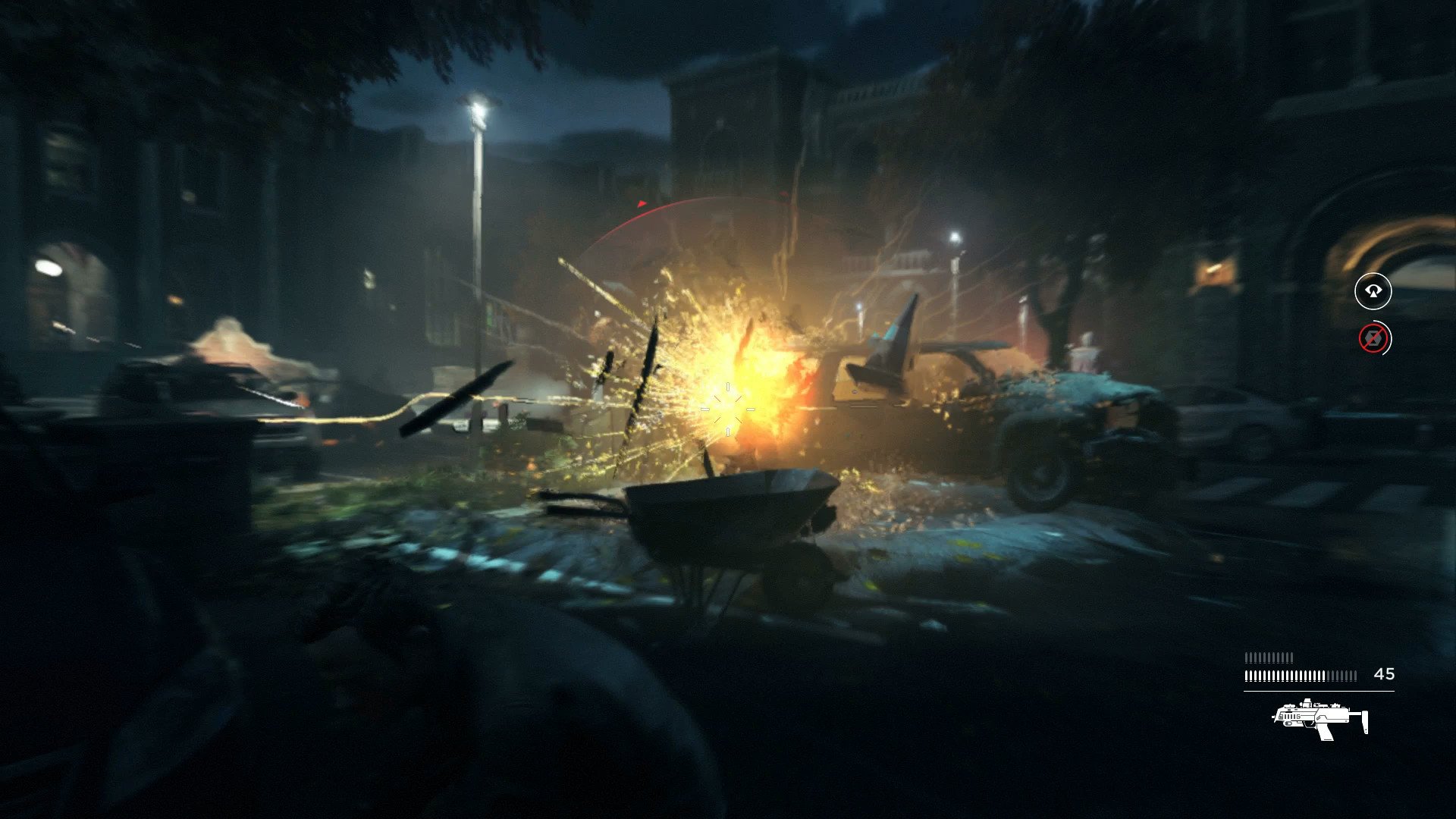
If you ignore Jack's powers and try to treat Quantum Break like a typical shooter, you'll quickly find yourself out-matched.
When you consider the idea the possibility that the game's various guns are simply there to augment Jack's superhuman capabilities, then it makes sense that they'd play a complementary role. Every enemy I encountered in the game's first Act was strapped in body armor, head to toe — spray and pray isn't a good tactic in Quantum Break. Jack has disappointingly basic regenerating health; I think Remedy missed the opportunity to add some potentially interesting time-reversal healing mechanics here. Regardless, the point is that he's very squishy. We take the idea of a one-man-army for granted in modern shooters, and with that in mind, Quantum Break can be somewhat ironically realistic. If you ignore Jack's powers and try to treat Quantum Break like a typical shooter, you'll quickly find yourself out-matched.
So far, Remedy has done an impressive job balancing Quantum Break's time abilities in a way that doesn't render combat trivial, and forces you to be tactical and considerate about their usage. Each time power has restrictions on how often you can deploy them. The more potent 'Time Blast' has a comparatively long cooldown, as it causes a violent disturbance in the chronon field, destroying objects and enemies in a spectacular warp of bent space-time. Defensive abilities like Jack Joyce's time rush ability have a shorter cool down, as the frequency you'll need it to avoid the game's punishing A.I. is quite high.
Jack's most crucial ability is his 'Time Stop' power, which locks an area in a pocket of frozen time. When you encase an enemy in the field, you can fire a stack of bullets at its edge, so that they strike the target in an instant when the field shatters back to the present.
Some of the more simplistic combat mechanics such as the automatic cover system and regenerating health allow Quantum Break's outstanding time abilities to take center stage. While in cover, your time is best spent planning your next assault, rather than time your attacks carefully and formulating strategies
It's not all third-person physics combat, though. So far, and in typical Remedy style, the game breaks up the time-warping shooting gallery with physics puzzles, asking you to use your time powers in creative ways.
With all of its elements combined; pockets of slow motion, destructible environments, varied enemies, highly mobile combat and spectacular ability effects, Quantum Break has been nothing short of infectious so far, merely writing about it is making me want to jump right back in.
Cinematic future
Overall Impressions
Barely two hours into the game, and Quantum Break has offered a unique, but familiar experience. It feels like the culmination of what Remedy learned while making Alan Wake; blending tried and tested TV story structuring with a third person shooter can work extremely well. Only this time they had a far larger Microsoft budget to play with.
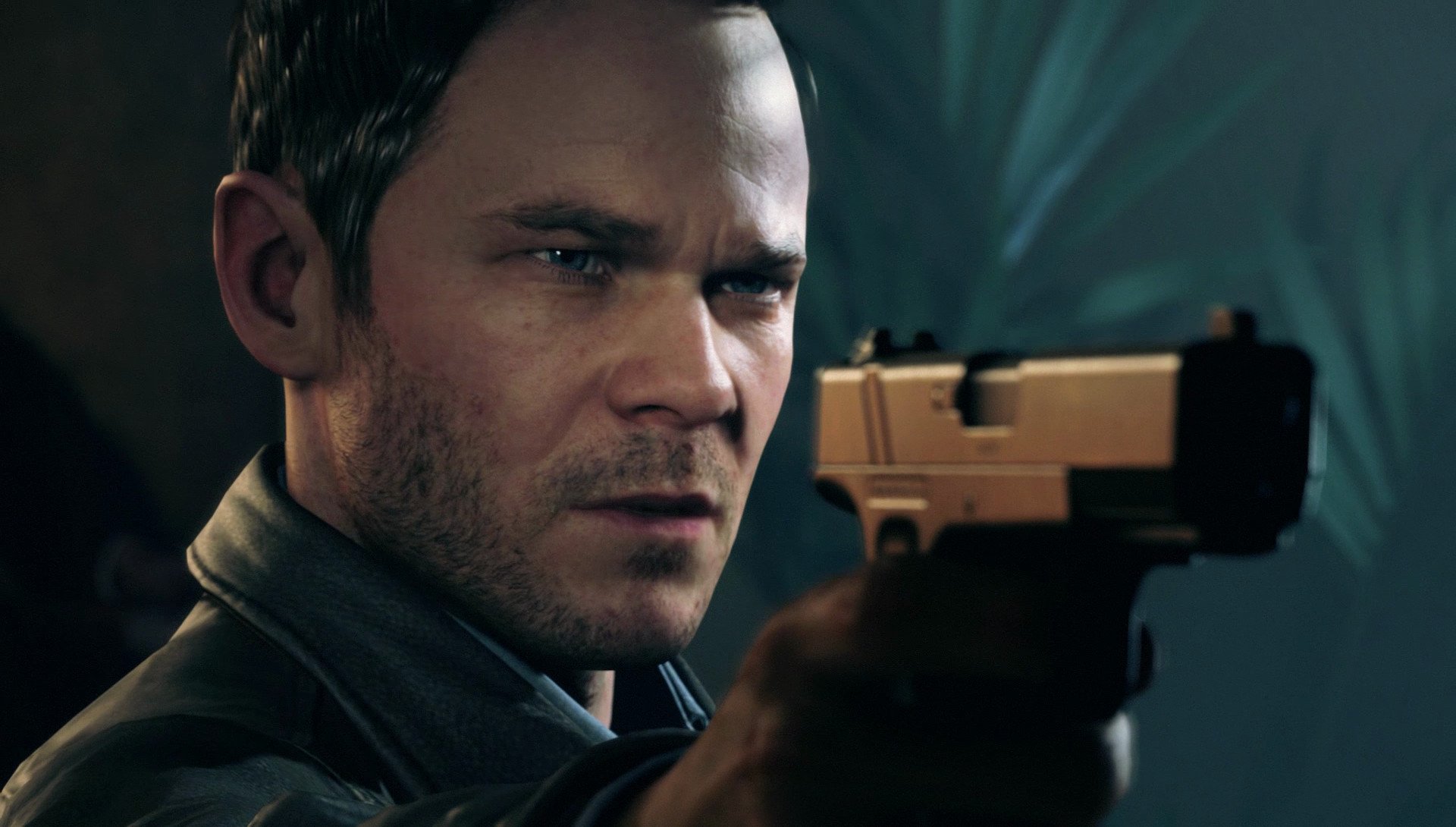
At the end of every act, you're presented with choices that can completely alter the course of the game. Not only does this enhance the games replayability in place of a tacked-on multiplayer component, but it's an encouraging glimpse into a future where games and shows based on games needn't be terrible. Microsoft and other publishers have experimented with live action versions of their games with varying success, and with Quantum Break, we're starting to see how easily the experience can translate with the right direction.
Once you've made those choices, you can watch them unfurl via 20-30 minute live action episodes which offer an alternative perspective on the playable game's plot. The Quantum Break TV show takes us into the lives and motivations of Monarch Solutions, from Paul Serene himself through to the company's private army, and to those affected by the time stutters threatening to destroy reality.
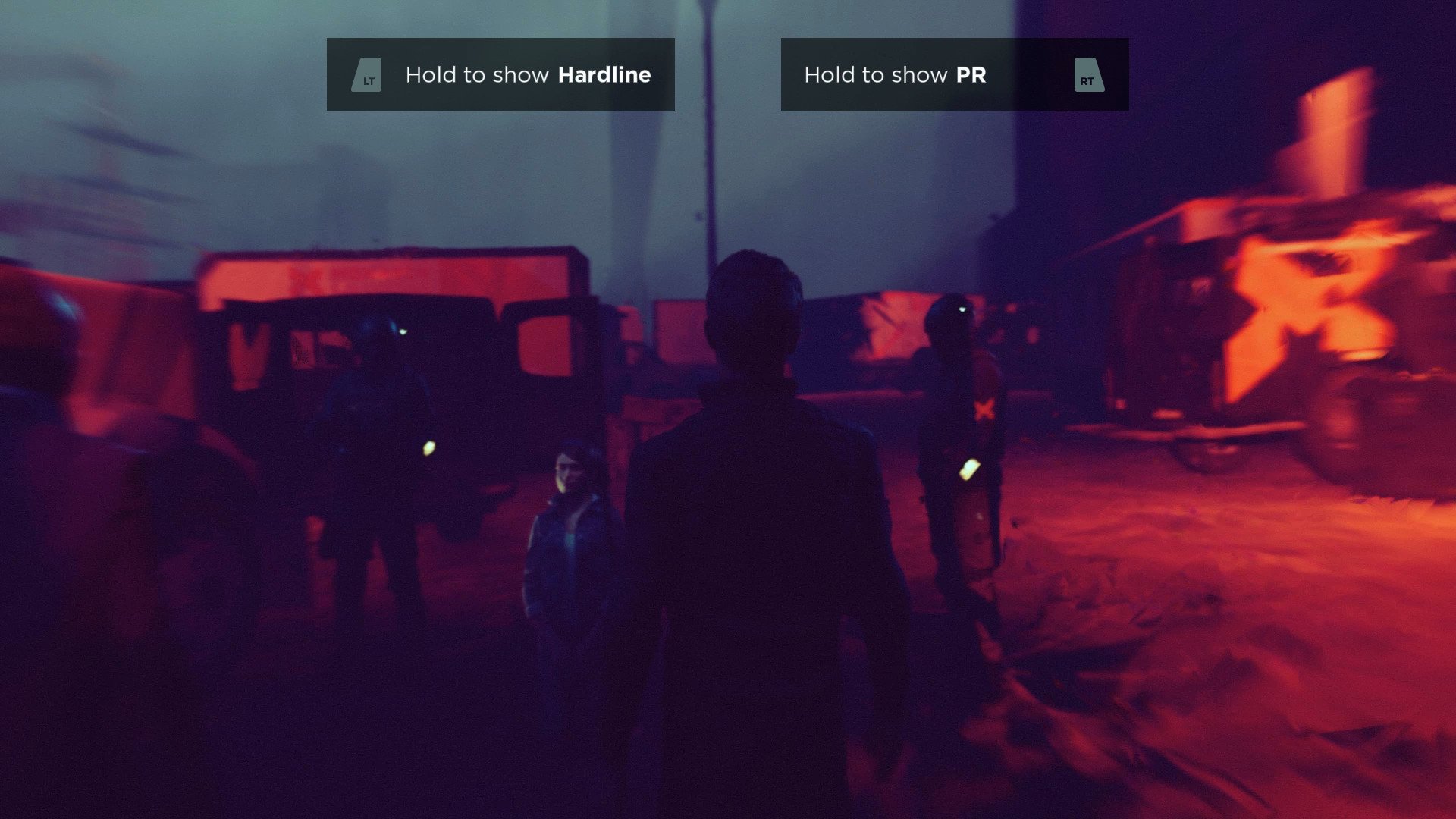
I didn't have particularly high expectations for the show, based on preconceptions of various failed attempts to bring games to the big screen (don't mention the atrocious Max Payne movie), but so far it seems like Remedy has nailed it. Lance Reddick's solemn portrayal of Monarch Solutions' CEO Martin Hatch has, thus far, been utterly chilling. Hatch is a man who has no qualms snuffing out human lives to ensure the survival of his company, but then again, it's all on Paul Serene's fatalistic orders.
Quantum Break's TV show fits snugly into the whole package, confidently shrugging off gaming's troubled history with live action content.
As a fan of the cast Remedy and Microsoft have put together for Quantum Break, it's refreshing to see them working together so well in a video game context. It seems that Quantum Break's TV show fits snugly into the whole package, confidently shrugging off gaming's troubled history with live action content.
I'm intrigued to see how the story will play out as I dive further into the game (and just how many more awesome Lumia and Surface cameos Microsoft can cram into it).
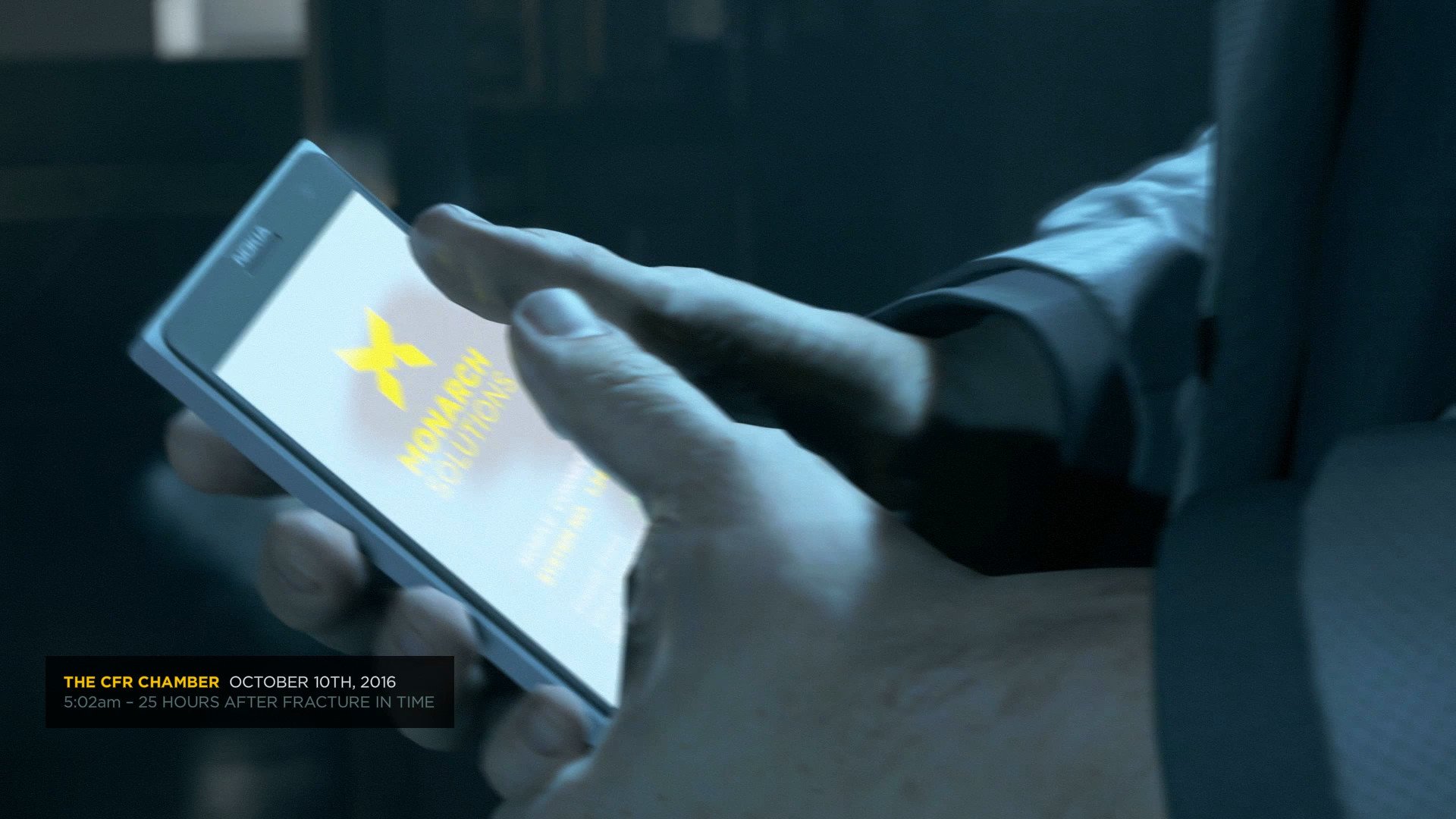

Of course, the live action portions are entirely optional. If you're not into TV shows, it's perfectly reasonable that you might want to skip them. Even as someone who enjoyed what Remedy had put on offer, I did feel as though I had to adjust to the pacing whiplash a little. So far, it seems Remedy have avoided a Metal Gear Solid 4-like kind of deal, where there's more cutscenes to watch than there is gameplay, but you can skip them entirely without losing grip on the game's central plot. It follows a character driven secondary perspective, avoiding plot points that could confuse the game itself.
It's equal parts encouraging and exciting that Microsoft greenlit such an experimental and, likely expensive project, and I hope that it works out well as I progress towards the end because I'd personally like to see more of this sort of thing.
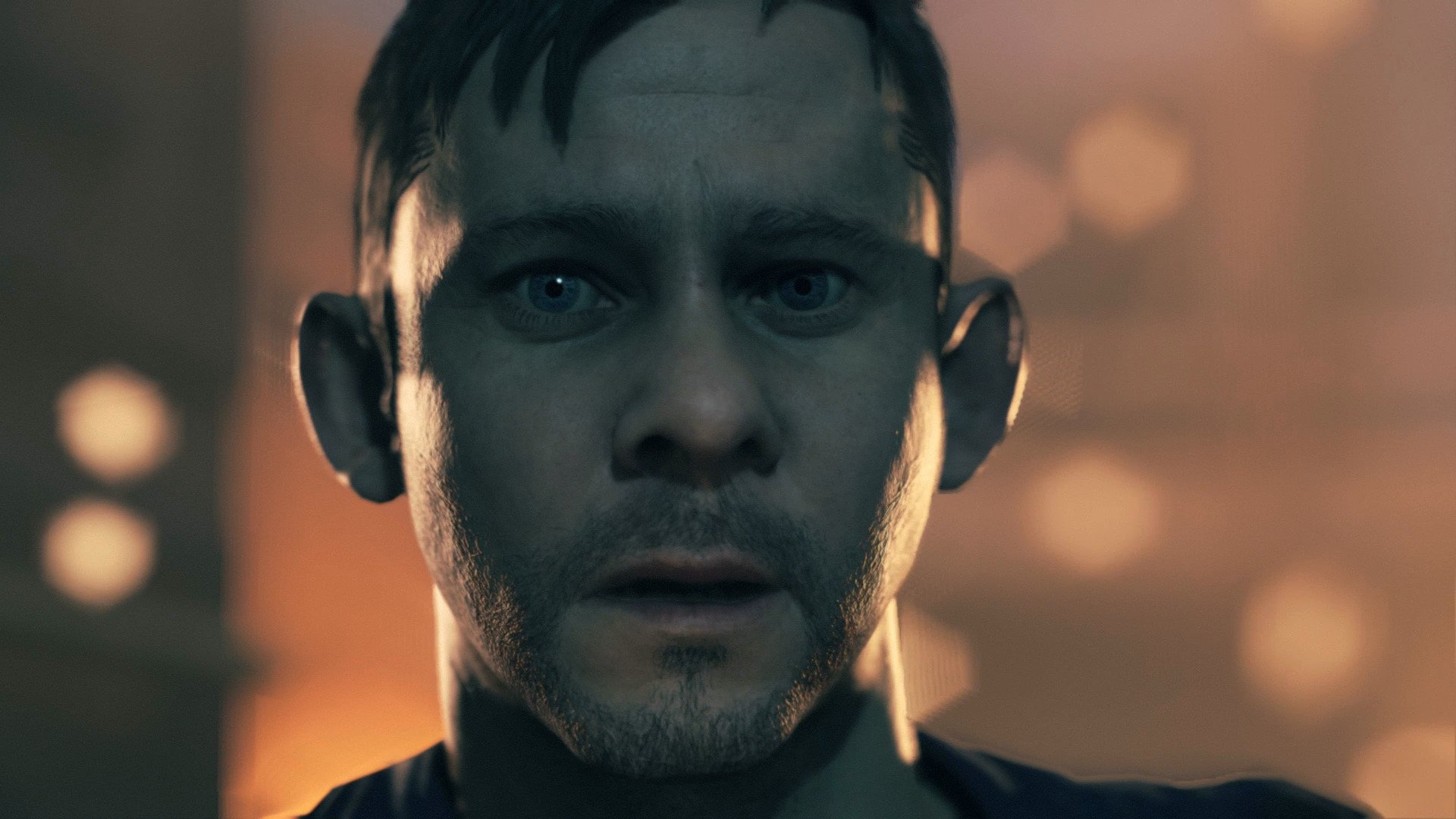
On the road to review, I'll be looking out to see how the story develops, how well Remedy keeps the combat fresh, and what effect that upcoming title update has on the game's visuals. Even at this early stage, it's quite apparent that Quantum Break is a very special game, and will likely earn a place among the best of what Remedy Entertainment and Xbox One has to offer. Stay tuned.
Quantum Break launches on April 4th, exclusively for Xbox One and Windows 10.

Jez Corden is the Executive Editor at Windows Central, focusing primarily on all things Xbox and gaming. Jez is known for breaking exclusive news and analysis as relates to the Microsoft ecosystem while being powered by tea. Follow on Twitter (X) and Threads, and listen to his XB2 Podcast, all about, you guessed it, Xbox!
